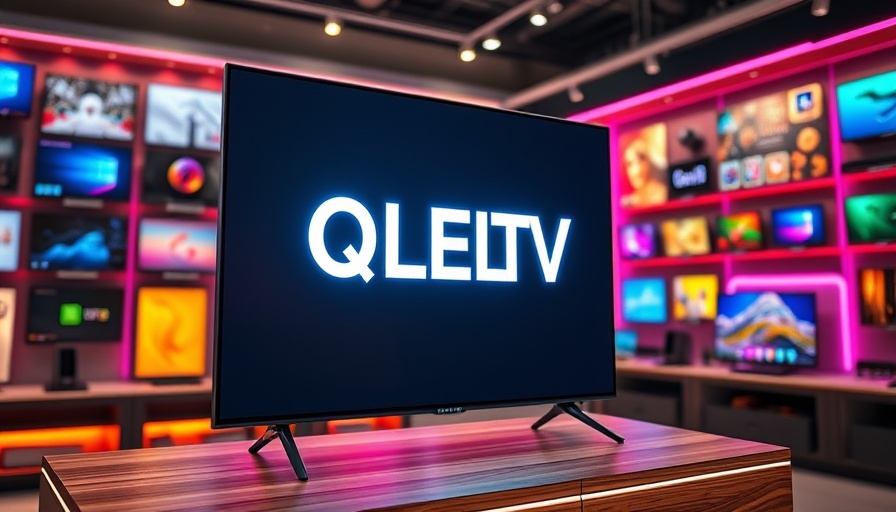
Your Future TV Experience: The Evolution of QLED Technology
In an exciting development for tech enthusiasts and families alike, Samsung is pioneering efforts to make Quantum Dot Light Emitting Diode (QLED) television technology more affordable without compromising its dazzling visual quality. By targeting the costly quantum dot sheets —essential layers that enhance the vibrancy and realism of colors in displays—Samsung aims to revolutionize the way consumers experience home entertainment.
What are Quantum Dots and Why They Matter?
Quantum dots are tiny semiconductor crystals that enable the display to produce stunningly vivid colors. Acting as a filter, the quantum dot layer lies atop traditional LCDs and translates light into vibrant hues, making your viewing experience notably more lifelike when compared to standard LED TVs. The impact of this technology cannot be overstated, as it significantly elevates the visual fidelity of HD content, appealing to movie buffs and gamers.
Breaking Down the Cost Barrier in QLED Manufacturing
Interestingly, one of the major expense drivers for QLED TVs lies not within the primary screens themselves but in the protective film layers surrounding the quantum dot sheets. These films serve a crucial function, shielding the components from moisture and oxygen. However, they also account for a staggering 40% of the quantum dot cost. By innovating a design that reduces these layers from five to just three, Samsung is set to streamline production, promising substantial cost savings that could reverberate throughout the market.
The Impact of Economies of Scale and Consumer Benefits
The implications of this development extend far beyond immediate cost-cutting. For a company that produces millions of TVs annually, decreasing production expenses could lead to lowered retail prices. However, Samsung might also leverage this savings to enhance product features instead of merely slashing prices. Picture televisions with upgraded audio capabilities, increased brightness, or enhanced processing speeds—essentially, superior products at the same cost. Even if prices remain unaffected, consumers stand to gain from improved television sets.
Patience is Key: The Product's Path to Market
While the news is promising, eager viewers will need to exercise patience. Samsung has not yet confirmed the timeline for bringing this innovative technology to market. The journey from concept to store shelves includes rigorous testing, optimization, and strategic supply chain considerations. Until then, consumers can only speculate about when they might get their hands on these technologically advanced yet affordable QLED TVs.
Connecting the Dots: What This Means for Future Displays
The enhancement of QLED affordability could challenge traditional LED displays, offering consumers more choices and potentially setting a new benchmark for performance. As we inch closer to a time when stunning QLED visuals become more accessible, the competition among TV manufacturers is likely to intensify, driving innovation further in pursuit of consumer appeal.
Bottom Line: A Bright Future Ahead
As we look ahead, Samsung's advancements in its quantum dot technology not only represent a significant leap for the company but also a hopeful sign for consumers. By balancing cost reduction with quality enhancement, the next generation of QLED TVs may become an electrifying gateway to better viewing experiences, marrying affordability with cutting-edge technology. The final product may well redefine how we engage with entertainment in our homes.
 Add Row
Add Row  Add
Add 




Write A Comment